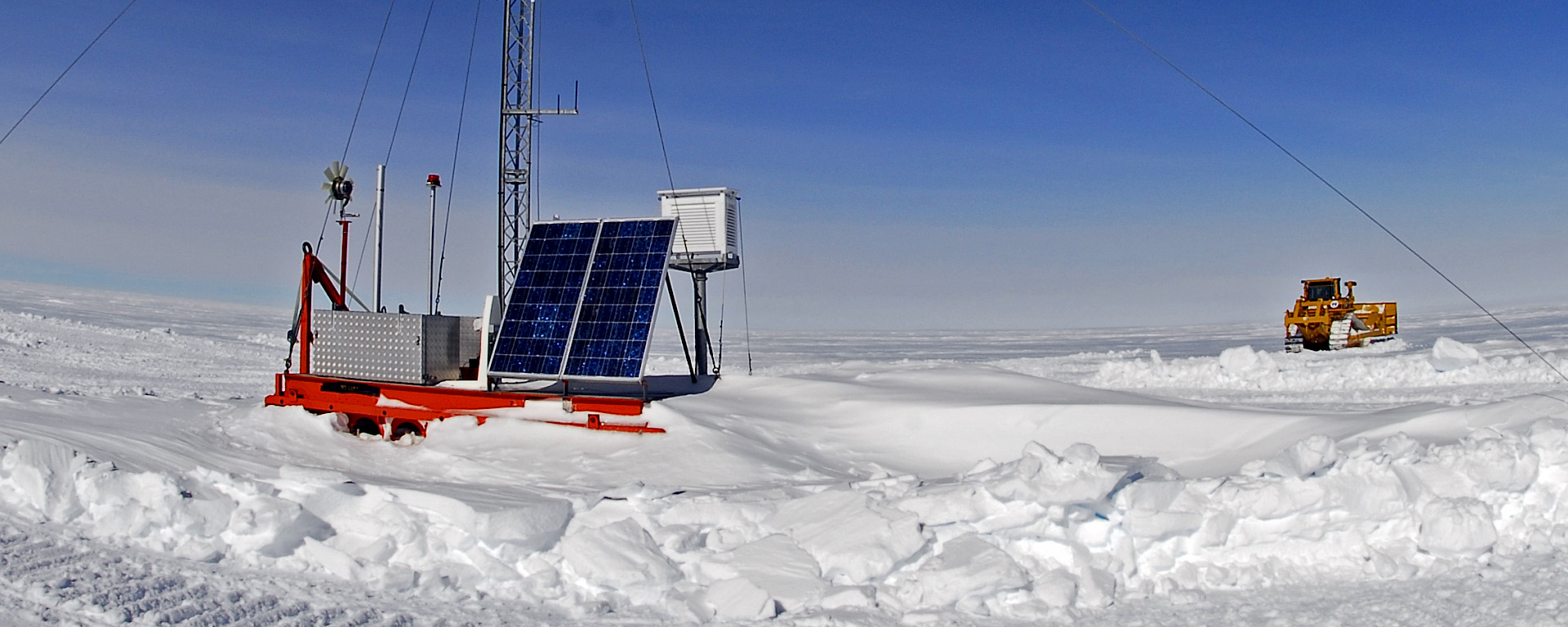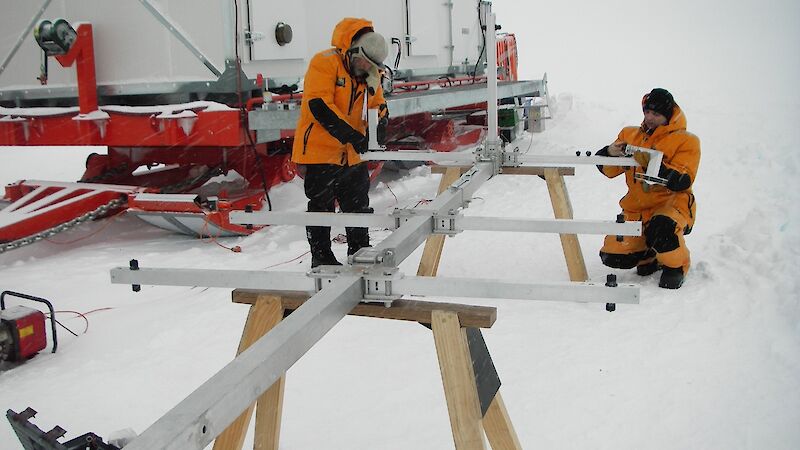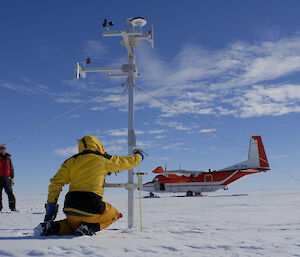The AAD has used automatic weather stations (AWS) in remote Antarctic sites since 1984.
Automatic weather stations run on solar power. They each have up to 14 sensors and a satellite transmitter. The stations collect information about the weather in remote areas, and send it via satellite.
Once they are set up the weather stations are rarely, if ever, visited. This means they need to be very reliable. Automatic weather stations run on very low currents. This means they can be built with smaller solar panels and batteries, making the unit lighter and more aerodynamic to cope with the strong Antarctic winds.
Automatic weather stations help us:
- create a climatic record
- understand global climate change
- forecast the weather — in support of helicopter and light aircraft operations.
What we measure
Automatic weather stations take measurements both above and below the surface of the snow. They measure:
- air temperature
- atmospheric pressure
- atmospheric humidity
- wind run
- wind direction
- solar radiation
- snow accumulation.
Weather stations have temperature sensors at different heights. This allows us to measure the microclimate of the region. Above the snow, sensors are set at 1 m, 2 m and 4 m. Below the snow they are set at 0.1 m, 1 m, 3 m and 10 m.
The temperature at 10 m below the surface does not vary on an annual basis. It represents the mean annual temperature for that site.
This generation of weather stations were developed as a joint venture between the AAD and Tasmanian company, Climetrics.




